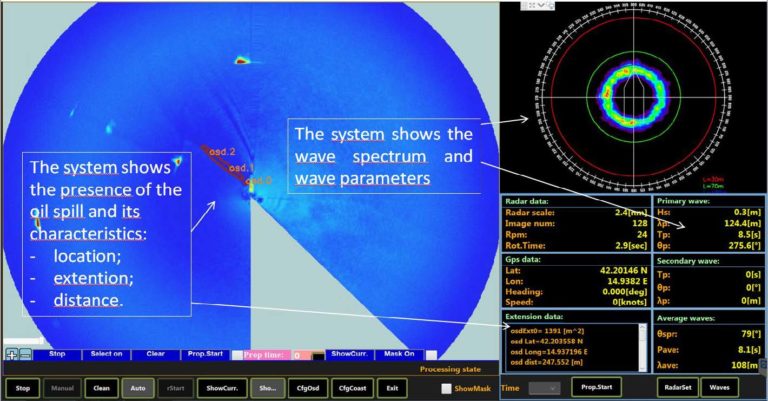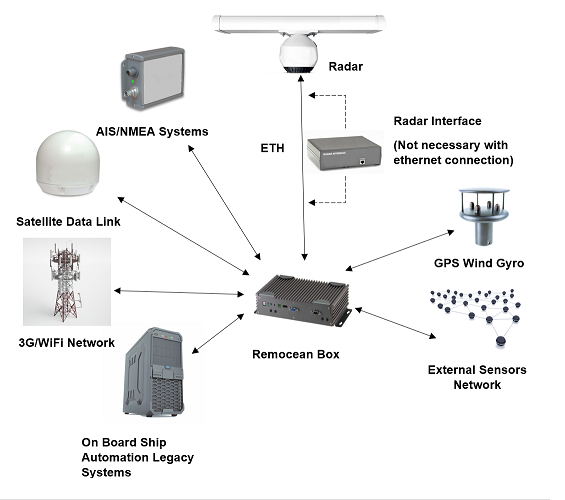Detection of Oil Spill
The Remocean Oil Spill Detection & Propagation system, based on innovative radar data analysis algorithms , allows to detect the presence of pollutant spills on the sea surface .
The integration of the measurement of surface waves and currents, provided by the system, with that of the pollutants detected, allows, thanks to the help of powerful hydrodynamic models, to predict the propagation of the pollutant stain over time , providing useful information to the personnel who takes care of its recovery.
This type of information can be acquired both on ships, using the onboard radar, and on fixed positions (ports, coasts or off-shore platforms).
The Remocean Oil Spill Detection & Propagation System can also be integrated with an AIS data reception system providing information on the ships present in the monitored area for a complete control of the sea and to identify the potential culprits of the spill.
All the information provided by the system is recorded on the database and can be viewed in a simple and intuitive way on a geographic map that shows the oil stain, the surface current field, and the forecast of the propagated map.
Main features
Oil Spill Detection and Tracking:
• Manual: the user can draw one or more rectangles for the targeted search for oil spills;
• Automatic : the system automatically investigates the entire radar scan;
The system provides the following information:
• Position of the Oil Spill : Latitude and Longitude of the center of gravity of the Oil Spill;
• Oil Spill Surface : automated calculation of the Oil Spill area;
• Distance from the radar of the center of gravity of the Oil Spill;
• Position, speed and course of the ship ;
• Propagation of the oil slick;
• Surface currents ;
• OSD area overlay on maps ;
• Data archiving ;
• Raw radar data images ;
• AIS information and ship location on a geographic map .
Main features

Systems Architecture


